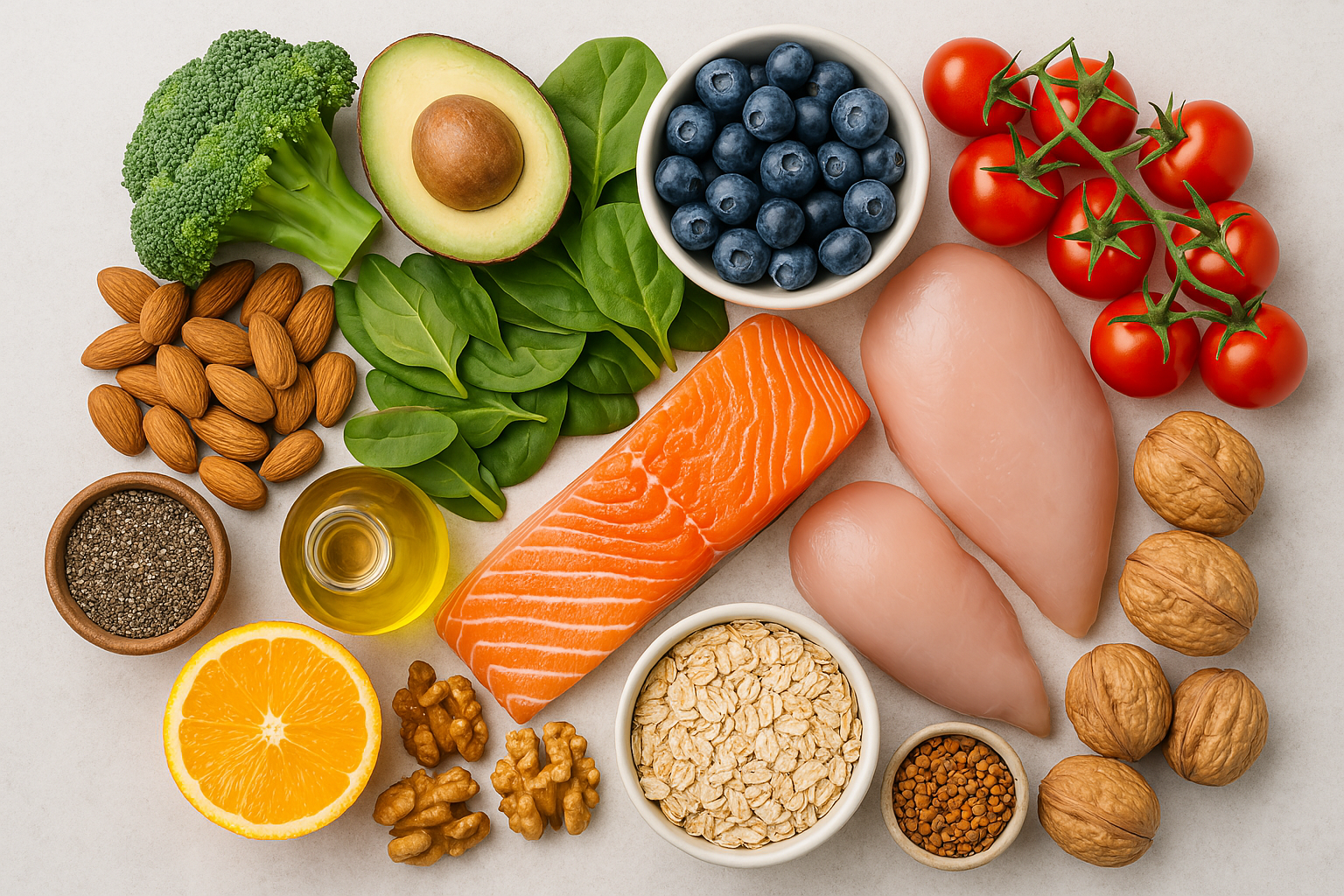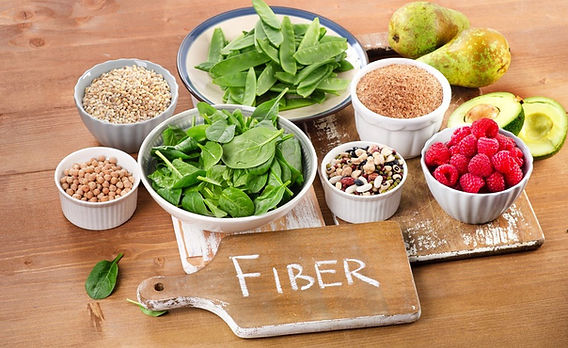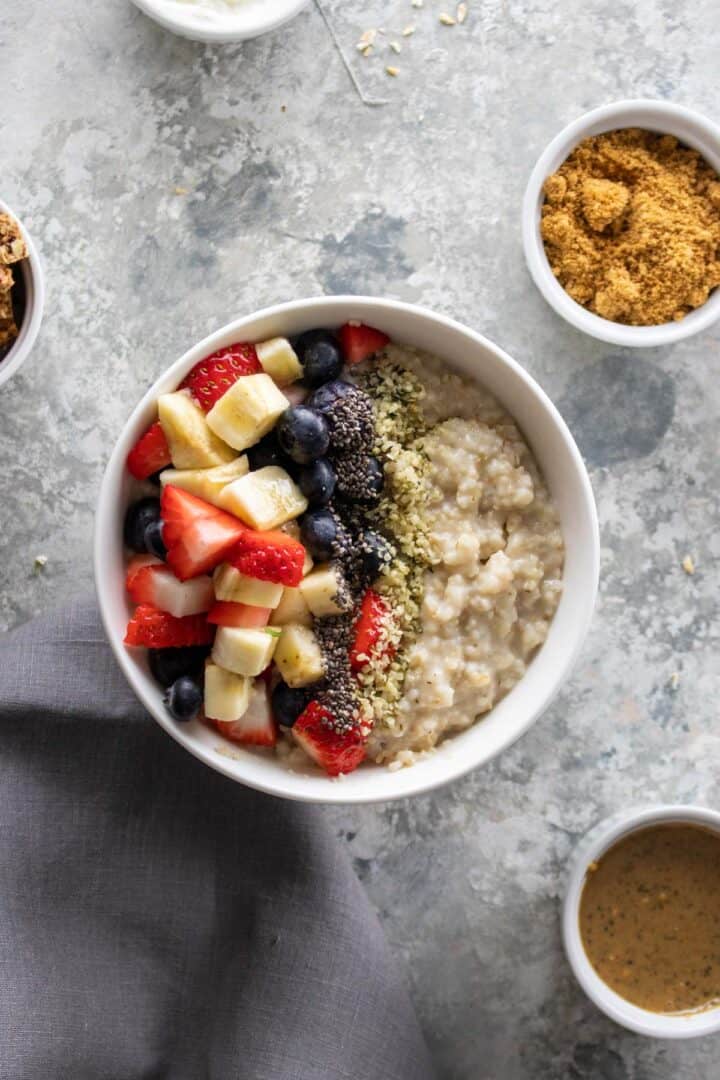
Healthy eating is one of the most powerful habits you can build to improve your overall well-being. It’s not just about maintaining a certain weight or appearance—it’s about giving your body the nutrients it needs to function at its best. Through healthy eating, you can boost energy, improve mental clarity, strengthen immunity, and reduce the risk of chronic diseases.
In this article, we’ll explore 20 essential healthy eating practices that can help you live a longer, stronger, and more vibrant life.
—
1. Embrace Variety in Healthy Eating

One of the foundations of healthy eating is variety. No single food contains all the nutrients your body requires. Incorporating different fruits, vegetables, whole grains, lean proteins, and healthy fats ensures a broad intake of vitamins and minerals, supporting balanced nutrition.
For Delicious Smoothie and Juicing Recipes, click here.
—
2. Prioritize Whole Foods in Your Healthy Eating Plan

Whole foods—such as fresh vegetables, fruits, legumes, seeds, and whole grains—are staples of healthy eating. They are minimally processed and packed with fiber, antioxidants, and essential nutrients. Focusing on whole foods over refined or packaged options is a key principle of eating well.
—
3. Avoid Excessive Processed Foods for Healthier Eating

Highly processed and ultra-processed foods often contain high levels of sodium, sugar, unhealthy fats, and additives. Reducing these foods is a core part of healthy eating, helping to prevent obesity, heart disease, and diabetes.
—
4. Practice Portion Control as Part of Healthy Eating

Even nutrient-rich foods can lead to weight gain if consumed in excess. Healthy eating includes being mindful of portion sizes, using smaller plates, and learning to listen to your body’s hunger signals to avoid overeating.
—
5. Stay Hydrated to Support Healthy Eating Goals

Water plays a crucial role in digestion, nutrient absorption, and toxin elimination. Choosing water over sugary drinks is a simple yet powerful healthy eating habit. Aim for 8–10 glasses daily as part of your wellness routine.
—
6. Practice Mindful Eating for a Healthier Relationship with Food

Mindfulness enhances healthy eating by encouraging you to slow down, savor your meals, and recognize fullness cues. Avoid distractions like phones or TVs during meals to truly connect with your food.
—
7. Balance Carbs, Proteins, and Fats in Healthy Eating

A well-balanced intake of macronutrients is central to healthy eating. Choose complex carbs like brown rice, lean proteins like legumes or chicken, and healthy fats from nuts or avocados to support sustained energy and body function.
—
8. Increase Fiber Intake to Boost Your Healthy Eating Plan

Fiber improves digestion, stabilizes blood sugar levels, and supports satiety. Whole grains, fruits, vegetables, and legumes are fiber-rich and align perfectly with healthy eating practices.
—
9. Cut Down on Added Sugars to Strengthen Healthy Eating

Excess sugar consumption can lead to weight gain and metabolic disorders. One of the key pillars of healthy eating is minimizing added sugars found in processed foods, sweetened beverages, and desserts. To lower your blood sugar, click here..
—
10. Reduce Salt Consumption as Part of Healthy Eating

Too much salt can raise blood pressure and strain your heart. Choosing low-sodium products and cooking at home allows better control, helping you stay aligned with healthy eating recommendations.
—
11. Choose Healthy Cooking Methods for Better Eating Habits

How you cook your food matters just as much as what you eat. Steaming, baking, and grilling preserve nutrients and reduce fat content, making them perfect techniques for anyone committed to healthy eating.
—
12. Include More Plant-Based Meals for Healthier Eating

You don’t need to go vegetarian, but healthy eating encourages adding more plant-based meals. Vegetables, legumes, and nuts are nutrient-dense and help lower the risk of heart disease and inflammation.
—
13. Read Labels to Make Smart Healthy Eating Choices

Understanding nutrition labels helps you identify hidden sugars, unhealthy fats, and excess sodium. This empowers you to make informed healthy eating decisions, especially when shopping for packaged foods.
—
14. Never Skip Breakfast in Your Healthy Eating Routine

Breakfast jumpstarts your metabolism and supports cognitive function. A healthy eating breakfast might include whole-grain oats, fruit, or eggs—providing energy and preventing overeating later in the day.
—
15. Plan Meals Ahead for Consistent Healthy Eating

Planning your meals in advance promotes healthy eating by minimizing impulsive food choices and ensuring balanced nutrition throughout the week. It’s a practical way to maintain dietary discipline.
—
16. Tackle Emotional Eating to Stay on the Healthy Path
Emotional eating often leads to unhealthy food choices. Healthy eating involves recognizing emotional triggers and finding alternative coping mechanisms, such as journaling or walking.
—
17. Incorporate Probiotics and Prebiotics in Healthy Eating

A healthy gut supports immunity, digestion, and mood. Incorporate probiotic foods like yogurt and fermented vegetables, along with prebiotics such as garlic and bananas, to elevate your healthy eating strategy.
—
18. Limit Alcohol for Cleaner Eating Habits

Alcohol can disrupt metabolism and contribute to poor food choices. As part of a healthy eating lifestyle, it’s wise to drink in moderation—or avoid alcohol altogether—especially if weight management is a goal.
—
19. Tune In to Your Body’s Hunger Signals
Healthy eating is rooted in listening to your body. Eat when you’re truly hungry, stop when you’re satisfied—not stuffed—and avoid eating out of boredom or stress. This helps regulate energy and supports better digestion.
—
20. Strive for Progress, Not Perfection in Healthy Eating
Consistency is more important than perfection. Allow room for occasional indulgences, but stick with your healthy eating habits most of the time to see lasting improvements in your health.
—
Conclusion: Make Healthy Eating a Lifestyle, Not a Diet

Healthy eating is not a short-term fix—it’s a long-term commitment to nourishing your body, mind, and soul. By embracing these 20 practices, you can enjoy food more mindfully, reduce health risks, and feel your best every day. Start small, stay consistent, and let healthy eating become second nature.